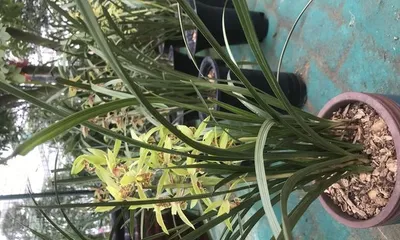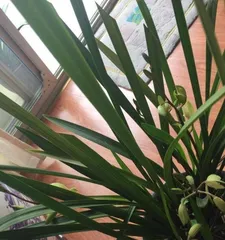Abstract:
Orchid grass is a common ornamental plant with an elegant appearance and various colors and forms. Different orchid grasses display different beauties. This article will introduce in detail the types and care of orchid grass.
Orchid grass is a common ornamental plant with an elegant appearance and various colors and forms. Different orchid grasses display different beauties. This article will introduce in detail the types and care of orchid grass.

I. Overview of Orchid Grass
Orchid grass, scientifically known as Orchidaceae, refers to a class of orchid plants. They are widely planted in various regions and are important members of the horticultural world.
II. Varieties of Orchid Grass
There are many varieties of orchid grass, which can be divided into Cymbidium, Cyclamen, Phalaenopsis, Oncidium, and Miltonia, etc. Each variety has its own unique color and form, making them highly valuable ornamental plants.

III. Cymbidium
Cymbidium, also known as Bottle Orchid or Everlasting Red. They have long flowering periods and are deeply loved by people.
IV. Cyclamen
Cyclamen, also known as Star Orchid or Seven-color Orchid. Their flowers have rich colors and varied forms, making them one of the most artistic varieties among orchid grasses.
V. Phalaenopsis
Phalaenopsis, also known as Lady Slipper Flower or Dancing Lady Flower. Their flowers have beautiful shapes and are often used as gifts.

VI. Oncidium
Oncidium, also known as Coconut Orchid or Tiger Skin Orchid. Their flowers have unique colors and are one of the most competitive varieties in the market.
VII. Miltonia
Miltonia, also known as Flame Mountain Orchid or Dragon Beard Grass. Their flowers have unique shapes and bloom like flames, making them easily recognizable.
VIII. Cultivation Techniques of Orchid Grass
When cultivating orchid grass, attention should be paid to soil moisture, appropriate temperature, fertilization, etc. At the same time, it is necessary to pay attention to loosening the soil and repotting work.
IX. Growth Conditions of Orchid Grass
In terms of growth conditions, orchid grass is relatively shade-tolerant, but adequate sunlight exposure is also necessary. Light intensity can be controlled using a shading net.
X. Propagation Methods of Orchid Grass
The propagation methods of orchid grass include division, sowing, cuttings, etc. Among them, division is the most commonly used method.
XI. Common Pests and Diseases of Orchid Grass
Orchid grass may suffer from pest and disease infestations during growth, such as powdery mildew, red spider mites, etc. Timely measures should be taken for prevention and control.
XII. Horticultural Uses of Orchid Grass
Orchid grass can not only be used as an ornamental plant but also for bonsai and flower arrangements, etc. It has a wide range of uses in horticulture.
XIII. Market Prospects of Orchid Grass
With the improvement of people's living standards, the demand for garden flowers is also increasing. In the future, the market prospects for orchid grass are promising.
XIV. Significance of Orchid Grass
Besides being an ornamental plant, orchid grass also has profound cultural significance. In Chinese culture, it represents elegance, purity, and beauty.
XV.
Orchid grass is a beautiful and colorful ornamental plant with high ornamental and market value. Through proper care methods, they can play a greater role in our lives.
<|end_of_box|>```